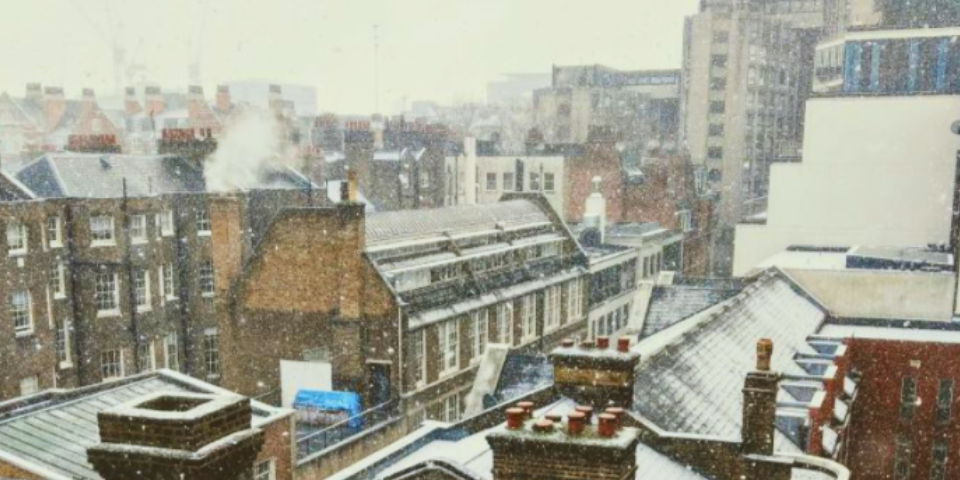
Make It a Routine! Do a Maintenance Check of Your Roof for the New Year
January 25, 2022
Do Roofing Companies Offer Financing?
April 22, 2022Regardless of the build material, roofs are designed to protect your home from the elements. It will help reduce the loss of energy in the form of heat escaping and help keep out moisture and pests. However, without proper maintenance, a roof can quickly fall into disrepair. With the constant flux of temperatures in the area, it can cause certain roofing materials (such as asphalt shingles) to expand and contract over time, which can lead to a cold-weather roofing problem. Ideally, your roof will protect you from the cold weather. However, there are a handful of cold-weather roofing problems that can develop and cost you big bucks. That is exactly why you need to know about these common cold-weather roofing problems and how to avoid them.
Harsh Winds
A winter storm can do far more damage than most other storms. The shingles on your roof have already shrunk in size due to cold weather. Paired with some dry winter months, the shingles can also become brittle and break off. This is more common with older asphalt or wood shingles, although it can happen with other materials.
The best way to avoid this is to have old, damaged shingles repaired and replaced. It is possible to spot damaged shingles that may break off through an annual inspection. By having the older, damaged shingles replaced before the wintertime, you’ll avoid having shingles ripped off during a storm, which can leave your roof exposed to moisture leaks and more significant problems.
Falling Tree Branches
A source of massive headaches, falling tree branches can cause more instant damage to your roof than just about anything else. Tree branches can fall onto your roof after snow and ice have weighed the branch down. Then, heavy winds or more ice might be enough to snap off parts of the tree during a winter storm. If a large portion of a tree breaks off and falls onto your roof, it can do far more damage than just ruff up some shingles. It could possibly puncture the roof or even cause structural damage.
The best way to avoid this kind of winter roof damage is to have the trees around your home regularly trimmed. You don’t want branches overhanging the roof. Not only will trimming the trees help prevent possible damage, but it will also make it more difficult for pests and animals to make their way onto the roof of your home.
Icicles
There is something beautiful about looking at the frozen icicles on a roof. However, while these can be beautiful, they can be both dangerous and damaging to your roof. During thaws, these bits of ice can break away and damage vehicles under the ice or injure anyone who might be walking underneath at the time.
In terms of your roof, this amount of ice becomes heavy. The added weight may begin to pull down on the gutters. Over time, this can rip gutters out of the roof, causing damage to both the gutters and the roof. There is a two-prong approach to preventing these large icicles from developing.
First, you will want to clean your gutters at least twice a year. By removing the blockage in the gutters, water will be able to flow away from your home. Thanks to this, most icicles that develop will form around the corners of your roof. Should these corner icicles begin to form, you’ll want to knock the ice down carefully. Just take care doing so as you don’t want to injure yourself, and you don’t want to damage the roof in the process.
Condensation
This is a persistent problem that, over time, can cause leaks and moisture issues with your roof. The outside of your property is cold, yet the inside of your property is warm. This can lead to the development of condensation on the roof. Over time, the constant layer of moisture on the roof can begin to seep under the shingles and into the roof itself. Eventually, this can lead to moisture finding its way into the attic of your home.
The best way to prevent this is to attack the situation from the inside. Condensation on the roof does form when there is no proper insulation between the exterior of the roof and your home’s interior temperature. You will want to insulate your attic, both along the walls and the ceiling, to protect your roof. If you have an unfinished attic, this will be the perfect opportunity to consider finishing the space. Not only will this protect your roof and help prevent condensation and the problems that can come from it, but it can also increase the value of your property (all while giving you more usable space inside the home).
Condensation might seem like a minor issue, but in reality, minor problems lead to major situations with your roof. The best way to extend the life of your roof is to handle these minor situations, including the insulating of your attic and any other room that might come in contact with the roof.
Schedule Your Annual Roofing Inspection Today
The best way to avoid not only these cold-weather roofing problems but to extend the life of your roof is to have an annual inspection performed. An annual inspection will spot problems that have developed over the subsequent year. It will also allow you to make minor repairs, saving you thousands of dollars in preventing major issues. So, no matter the age of your roof or when you moved in if it’s been a year (or more) since your last roof inspection, now is the time to give the experts at Charlotte Roofing Specialists a call.





